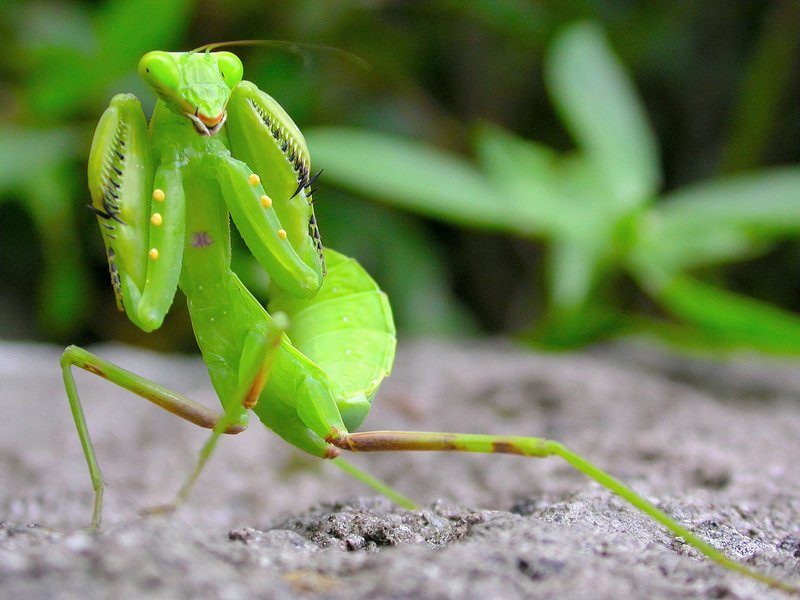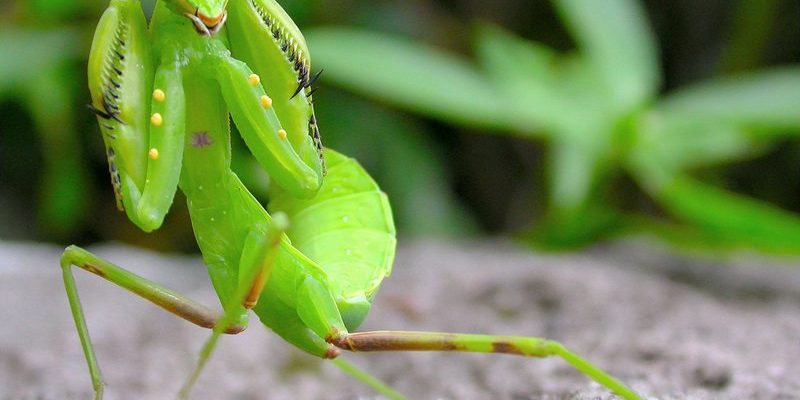
Praying mantises are not just intriguing; they also play a crucial role in our ecosystems. Their hunting skills and unique behaviors make them standout figures in the insect kingdom. So, grab a cup of coffee and let’s dive into some of the most mind-blowing facts about these amazing creatures.
1. Masters of Camouflage
Praying mantises are like the ultimate hide-and-seek champions. They often blend into their surroundings, whether it’s green leaves or brown branches, making them hard to spot. This natural camouflage isn’t just for show; it’s a clever hunting strategy. By staying hidden, they can ambush unsuspecting prey that wanders too close.
Some species even mimic the colors and shapes of flowers. Imagine how a flower petal gently sways in the wind, and suddenly, a mantis lunges to capture an unsuspecting pollinator. This behavior not only helps mantises catch food but also showcases their incredible adaptability. Honestly, who knew bugs could be such stealthy operators?
2. Unusual Eating Habits
Here’s the thing: praying mantises have a pretty unique approach to dining. They’re not picky eaters; they feast on a variety of critters, including flies, crickets, and even other mantises. Yes, you heard that right! Mantises are known for sexual cannibalism, where the female sometimes eats her male partner after mating.
While this might sound harsh, it actually serves a purpose. For the female, it provides extra nutrients that can be beneficial for her future eggs. Talk about a bizarre way to boost your diet! This practice, while shocking, is a fascinating aspect of their reproductive strategy.
3. Incredible Eye Power
You might be wondering how a praying mantis spots its prey so quickly. Well, it’s all in those big, bulging eyes! Praying mantises have compound eyes, which provide a wide field of view and excellent depth perception. This means they can see in nearly all directions—imagine having eyes in the back of your head.
These eyes also allow mantises to track fast-moving objects with precision. They can judge the distance to their prey, making their strikes incredibly swift and accurate. When you see a mantis snatch a fly mid-air, it’s not just luck; it’s a well-honed skill powered by their amazing eyesight.
4. Unique Communication Methods
Praying mantises don’t just rely on their hunting skills; they also have some interesting ways of talking to each other. They use body language and pheromones to communicate. For example, males may perform a series of dances or movements to attract a female’s attention. Imagine a tiny insect version of a dance-off; it’s both cute and complex!
During mating, pheromones play a key role as well. These chemical signals help mantises find each other, even when they’re far apart. This combination of visual and chemical communication highlights just how sophisticated these little creatures really are.
5. The Praying Posture
Have you ever noticed how praying mantises hold their front legs together, almost as if they are in prayer? This iconic pose is where they get their name. But the stylish stance isn’t just for show; it helps them look more intimidating to potential predators.
During this pose, they’re also ready to strike at a moment’s notice. Their front legs are equipped with spines that help catch and hold onto prey. So, when you see a mantis poised like that, remember—it’s not just being dramatic; it’s preparing for action!
6. A Variety of Species
Did you know that there are over 2,400 species of praying mantises worldwide? That’s a lot of variety! From the small Carolina mantis to the massive Giant Asian mantis, these insects come in a wide range of sizes and colors.
Each species has its own unique adaptations to help it survive in different environments. Some thrive in tropical climates, while others can be found in temperate regions. This diversity is a testament to their evolutionary success and ability to adapt over millions of years.
7. Lifespan and Life Cycle
When it comes to lifespan, praying mantises don’t hang around for long. Most species live only about 4 to 12 months. Their life cycle starts with an egg case—known as an ootheca—which the female lays in the fall. These egg cases can contain dozens of eggs, giving rise to many little mantises when spring arrives.
As they grow, mantises go through several molts before reaching adulthood. Each molt allows them to grow larger and shed their old skin. It’s a bit like changing clothes, but much more dramatic. This quick life cycle helps mantises take advantage of warm weather and abundant food sources.
8. Ecological Importance
Praying mantises play a significant role in maintaining the balance of our ecosystems. As voracious predators, they help control the populations of various pests, including mosquitoes, flies, and even caterpillars. By keeping pest numbers in check, they contribute to a healthier environment for plants and other animals.
Farmers often appreciate having these little hunters in their gardens. Instead of using chemical pesticides, having a few praying mantises around can naturally reduce pest problems. It’s a win-win situation where nature helps itself without the need for harsh chemicals.
9. Cultural Significance
Throughout history, praying mantises have held various cultural meanings in different societies. Some cultures view them as symbols of patience and mindfulness, while others see them as messengers or omen figures. In certain traditions, watching a mantis was believed to bring good luck or insight.
Their unique appearance and behaviors have made them subjects of fascination in art and literature too. From ancient texts to modern media, mantises have captured the imagination of many, showcasing their role as not just insects, but also icons in human culture.
10. Understanding Threats and Conservation
Like many insects, praying mantises face challenges due to habitat loss and pesticide use. Urbanization and agricultural expansion can destroy their natural habitats, making it tough for them to survive. Moreover, certain pesticides can be harmful, not just to pests but to beneficial insects like mantises, too.
Conservation efforts are important to protect these fascinating creatures. Creating habitats like gardens or meadows can provide safe spaces for mantises and enhance biodiversity. By planting native flowers and avoiding harmful chemicals, we can help ensure that mantises continue to thrive in our world.
In conclusion, praying mantises are much more than just spooky-looking insects. They’re incredible hunters, masters of disguise, and an important part of our ecosystems. Their unique behaviors and fascinating biology make them a subject worthy of admiration. So next time you spot one in your garden, take a moment to appreciate the little ninja in front of you!

